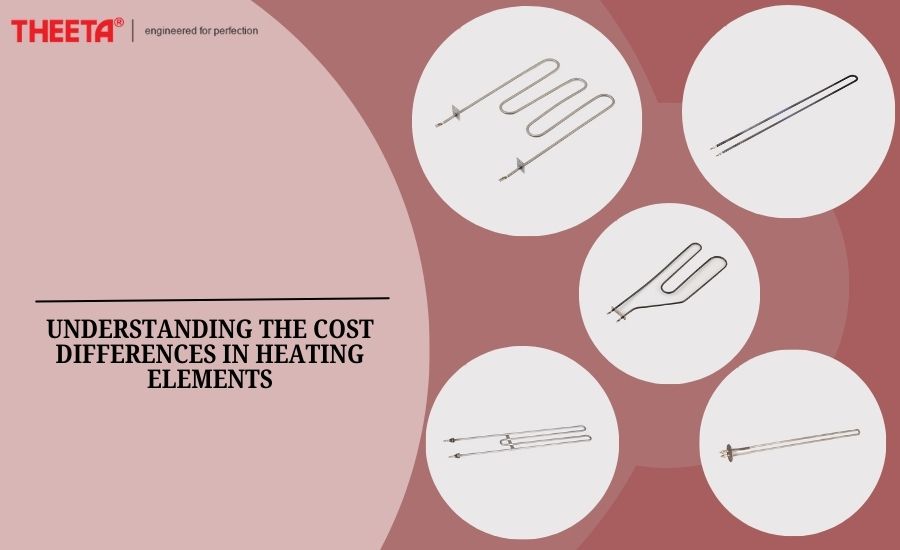
Heating elements are vital to many industrial and domestic products. Heating elements may seem comparable, but their costs vary. Customers sometimes wonder why one heating element is much more costly than another, despite their similar look. Quality materials, production procedures, and stringent quality checks throughout the manufacturing process are the answer. In the following discussion, we address the causes of these price differences and the need to consider more than price when analyzing heating components.
Key Factors Affecting the Cost of Heating Elements
1. Quality of MgO Powder
Heating elements need magnesium oxide (MgO) powder to separate the heating coil and sheath. Because MgO powder consistency varies, heating element efficiency and durability are affected. Premium-grade MgO featuring optimal particle size distribution guarantees outstanding thermal conductivity and electrical insulation. Inexpensive heating elements might incorporate inferior MgO that doesn't meet the required specifications for certain uses, resulting in less-than-ideal performance and possible electrical malfunctions.
2. Thickness and Quality of the Tube
The outer tube of the heating element, usually crafted from stainless steel or various alloys, plays a vital role in safeguarding the internal parts. Changes in tube thickness can significantly influence strength and thermal management. Robust, premium tubes offer superior resistance to corrosion and mechanical stress, making them ideal for rigorous applications. Nonetheless, tubes obtained from vendors lacking reliable quality standards or adequate testing methods, such as eddy current testing, may result in early failures, regardless of their outward appearance.
3. Source of the Tubing Material
The provider of the tubing material plays a crucial role in determining both the expense and the caliber of heating elements. Trustworthy and reputed providers that follow rigorous production protocols, such as eddy current testing to identify internal flaws, deliver more dependable products. On the other hand, lower-cost suppliers might overlook essential testing, leading to tubes with hidden defects that could jeopardize the performance of the heating element.
4. MgO Composition Suitability
Not every MgO composition fits every application perfectly. For example, elements subjected to elevated moisture conditions require MgO that possesses particular moisture-resistant characteristics. Inconsistent MgO composition can result in diminished insulation resistance, increasing the likelihood of electrical malfunctions. It is crucial to ensure that the MgO composition is specifically designed for the element's intended application, even if it incurs a greater expense.
5. Tube Hardness and Bending Requirements
Manufacturing requires the tube's toughness to be ideal for bending. A hard tube may shatter when bent, while a malleable tube may fail to keep its form, reducing heating element efficiency. Finding the perfect hardness balance is essential, and accomplishing this demands meticulous material choice and processing, which can increase expenses.
6. Quality of Sealing
Sealing the ends of heating elements is vital to block moisture intrusion, as this can lead to electrical malfunctions. The effectiveness of the sealing material and its application can differ significantly, which directly influences the dependability of the element. Premium seals offer an enduring defense, particularly in challenging conditions, yet they do demand a greater investment. Inadequate sealing may appear to be a budget-friendly choice at first, but it often results in recurring breakdowns and higher upkeep expenses.
Quality cannot be Judged by Appearance or Price Alone
Appearance or price alone cannot determine the quality of a heating element. The variations in material quality, manufacturing standards, and testing protocols remain hidden from plain sight. Although budget-friendly elements may appear similar to their pricier counterparts, they frequently fall short in terms of durability, efficiency, and safety needed for high-performance uses. Consequently, the price of a heating element should never be the only factor considered when deciding to make a purchase.
Theeta’s Approach
Balancing cost and quality to provide dependable heating elements at competitive rates, Theeta Electricals Pvt Ltd. uses the best raw materials and maintains stringent quality standards. We choose materials depending on use, MgO content, tube quality, and sealing methods. Eddy current testing of tubes and performance evaluations on final products support our quality promise. Theeta balances cost and quality to provide heating elements that surpass client expectations and run safely for years. Our goods represent our belief that quality should never be sacrificed for price. Choosing the proper heating element is critical for application success. Trust reputed vendors like Theeta for dependable and effective heating solutions adapted to your requirements.
Finding the right mix of cost and excellence at Theeta Electricals Pvt Ltd, we recognize the critical role of selecting optimal raw materials and upholding stringent quality standards to provide dependable heating elements at competitive prices. We meticulously choose materials according to their suitability for application, ensuring the optimal MgO composition, tube quality, and sealing methods are implemented.
We stand firm in our dedication to excellence, ensuring rigorous evaluations such as eddy current testing of tubes and comprehensive performance assessments on our final products. Theeta exceeds client expectations by effectively combining cost and quality to produce heating elements that work for years and meet the strictest safety requirements. Our products reflect our belief that quality should always trump cost. Choosing the right heating element is crucial to your application. Theeta, which prioritizes quality, offers reliable and efficient heating solutions tailored to your needs.